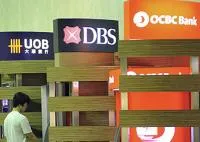
3 ways low interest rates affect Singapore banks' NIM
A flat yield curve is one.
According to CLSA, in addition to the structural direction of NIM, cyclical drivers should also be tackled. The most important cyclical driver for Singapore banks is the US Fed funds rate (FFR).
Here's more from CLSA:
We do not expect the FFR to rise before 2015, which means that the full benefit is unlikely to be visible in the P&L until 2016 or later. Nevertheless, it is worth exploring the potential upside.
As Head of Regional Banks Derek Orvington articulated in his April 2013 sector note Curve bawl, low interest rates affect NIM in the following ways:
1. Assymetric rate impact. Falling interest rates amid excess liquidity tend to drive down asset yield faster than the cost of funding , particularly as deposit rates approach zero.
The effect is to compress net interest spread. This impact is proportionally greater for banks flush with cheap deposits as cheap money undermines the relative value of their deposit-gathering franchises.
2. Flat yield curve. Banks can leverage the yield curve by placing excess liquidity in longer-dated (eg, two to three year) securities, thereby picking up additional spread.
A persistently low interest-rate environment flattens out the yield curve and reduces this pickup. again, this impact is greater for banks with a high proportion of assets parked in liquid securities as opposed to loans.
3. Free funds benefit. Banks’ interest-earning assets typically exceed interest-bearing liabilities due to invested equity and zero-cost liabilities.
The difference - “free funds” - is invested at prevailing interest rates. This benefit is obviously larger for banks with high levels of equity and zero-cost funding (ie, highly capitalised and deposit-rich). When these rates are lower, the NIM benefit from free funds is lower.
Thus when interest rates rise, these negative effects reverse. The most attractive bank profiles geared to this theme are those with:
-
Significant Casa balances.
-
Variable-rate loan books.
-
Excess liquidity in the short end of the curve (heavy cash, interbank and sub-two-year securities)
Investors should also consider the bank’s asset-quality prudence. When rates rise, some borrowers will struggle to repay their obligations. This is particularly a problem when rates rise in a disorderly fashion.
Within Asia, Singaporean and Hong Kong banks (including global names HSBC and Standard Chartered) are most geared to rising US rates.
The main reference rates in Singapore and Hongkong, Sibor and Hibor, are highly dependent on the direction of US-dollar Libor.













 Advertise
Advertise










